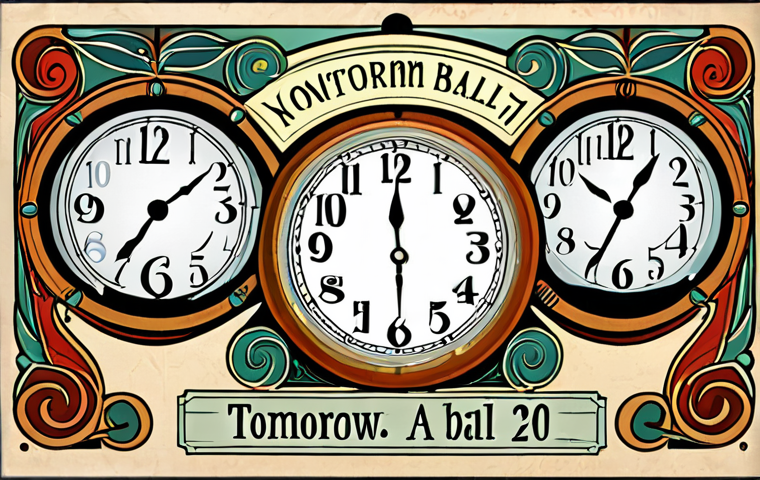So, you’re thinking about diving into the world of Hungarian grammar? It can seem a bit daunting at first, I know! As someone who’s tinkered with languages for years, I can tell you that Hungarian definitely has its quirks.
Forget everything you know about English grammar – word order is flexible, it’s agglutinative meaning suffixes are added like LEGO bricks to the base word to modify their meanings, and it has a bunch of cases you probably haven’t seen before.
While it’s true that GPT models show how AI is currently advancing across many fields including language learning, it’s not a replacement for truly understanding the concepts for yourself.
AI is very helpful in creating content and assisting language development, and it seems like that trend will grow in the future. Ready to demystify it together?
Let’s get a clear understanding of Hungarian grammar below!
Alright, let’s dive into the heart of Hungarian grammar, shall we?
Unlocking the Mystery of Noun Cases: More Than Just a Few Endings

Hungarian nouns are a wild ride. Forget the simple singular and plural you’re used to. We’re talking about a system of cases that dictates a noun’s role in a sentence.
It’s like each case adds a special flavor to the noun, telling you exactly how it relates to the verb and other words. It sounds intimidating, but once you grasp the core concept, it becomes surprisingly logical.
The Nominative Case: The Unassuming Foundation
1. Think of the nominative as the default setting for nouns. It’s the basic form you’ll find in dictionaries, used for subjects of sentences and for simply naming things.
For example, “a kutya” (the dog) in the sentence “A kutya ugat” (The dog barks). It’s the starting point for understanding all other cases.
Accusative: Spotlighting the Direct Object
2. The accusative case marks the direct object of a verb – the thing being acted upon. Typically, it’s formed by adding “-t” to the end of the noun, so “a kutyát” (the dog, accusative) in “Látom a kutyát” (I see the dog).
Recognizing this case is essential for understanding who or what is receiving the action in a sentence.
Dative: Giving and Going
3. The dative case is generally used to indicate the indirect object of a verb. This is the receiver of the direct object.
The suffixes “-nak” or “-nek” usually mark it. For instance, “Adok egy könyvet Péternek” (I give a book to Peter).
The Definite and Indefinite Articles: A Subtle Dance
Hungarian only has two articles: “a/az” (the) for definite and “egy” (a/an) for indefinite. But don’t let that fool you! Knowing when to use them is an art form.
It all comes down to whether you’re referring to something specific or something more general.
“A/Az”: Pinpointing the Specific
1. “A” and “az” are used when you’re talking about a particular noun that both you and your listener know. “A” is used before consonants, while “az” comes before vowels or consonant clusters that are difficult to pronounce.
For example, “A könyv az asztalon van” (The book is on the table).
“Egy”: Introducing the General
2. “Egy” is used when you’re introducing a noun for the first time or when you’re referring to any one member of a group. “Vettem egy autót” (I bought a car) implies that it’s just any car, not a specific one previously mentioned.
Verb Conjugation: A Symphony of Suffixes
Hungarian verbs change based on person (I, you, he/she/it, etc.) and tense (present, past, future). They also have different forms depending on whether the object of the verb is definite (known) or indefinite (unknown).
This is referred to as definite and indefinite conjugation, and it is very important for proper grammar construction!
Present Tense: The “Now” of It All
1. Present tense conjugation is the foundation. You’ll learn different suffixes for each person, which change whether you’re using definite or indefinite conjugation.
For example, “olvasok” (I read – indefinite) vs. “olvasom” (I read it – definite).
Past Tense: Revisiting Yesterday
2. To form the past tense, you add “-t” or “-tt” after the verb stem and then add the personal endings. “Olvastam” (I read – indefinite) or “olvastam a könyvet” (I read the book – definite).
The addition of “-t” or “-tt” is fairly regular, making the past tense easier to spot.
Future Tense: Glimpsing Tomorrow
3. The future tense is formed using the auxiliary verb “fog” + infinitive. “Fogok olvasni” (I will read).
It’s straightforward, but remember that “fog” also needs to be conjugated according to the person.
The Dance of Word Order: Flexibility Within Structure
While Hungarian is known for its flexible word order, it’s not a free-for-all. The order you choose can affect the emphasis of your sentence. The most important or new information typically comes first.
Topic-Comment Structure: Highlighting Importance
1. Hungarian often follows a topic-comment structure, where the topic (what you’re talking about) comes first, followed by the comment (what you’re saying about it).
For instance, “Én szeretem a csokoládét” (I, I love chocolate) puts the emphasis on “I.”
The Role of Focus: Where the Energy Lies
2. The focused element in a sentence is often placed immediately before the verb. This is the part of the sentence you want to emphasize the most.
For example, “Péter olvassa a könyvet” (Peter is reading the book) implies that it is Peter, and not someone else, who is reading.
Possessive Suffixes: Claiming What’s Yours
Instead of using separate possessive pronouns like “my” or “your,” Hungarian attaches suffixes directly to the noun. This creates a close relationship between the owner and the possessed item.
First-Person Singular: “My Precious”
1. The suffix “-m” indicates “my.” “A könyvem” (my book). It’s a simple addition that clearly marks ownership.
Second-Person Singular: “Yours Truly”
2. The suffix “-d” indicates “your” (singular, informal). “A házad” (your house).
Be mindful of using the informal “you” correctly in Hungarian.
Third-Person Singular: “His, Her, Its”
3. The suffixes “-ja” or “-je” indicate “his,” “her,” or “its,” depending on vowel harmony. “A kutyája” (his/her/its dog).
Mastering Vowel Harmony: A Melodic Foundation
Vowel harmony is a key feature of Hungarian, where suffixes must “harmonize” with the vowels in the root word. This means choosing suffixes with vowels that are either “back” vowels (a, á, o, ó, u, ú) or “front” vowels (e, é, i, í, ö, ő, ü, ű).
The suffix used must agree with the last vowel in the base word. This sounds complicated but is actually quite intuitive once you get used to it.
Back Vowels: The Deep Sounds
1. If the last vowel in the word is a back vowel, the suffix should also contain a back vowel. For instance, “ház” (house) takes the suffix “-ban” to become “házban” (in the house).
Front Vowels: The Higher Pitches
2. If the last vowel in the word is a front vowel, the suffix should also contain a front vowel. For instance, “kert” (garden) takes the suffix “-ben” to become “kertben” (in the garden).
Here’s a table to give you a quick look at the cases:
| Case | Function | Suffix Examples |
|---|---|---|
| Nominative | Subject, naming | (No suffix) |
| Accusative | Direct object | -t |
| Dative | Indirect Object | -nak/-nek |
| Locative | Location (at, on, in) | -ban/-ben/-on/-en/-ön |
| Instrumental | With, by means of | -val/-vel |
Practice Makes Perfect: Your Journey to Fluency
The best way to conquer Hungarian grammar is through consistent practice. Start with simple sentences, gradually increasing complexity. Don’t be afraid to make mistakes – they’re part of the learning process!
Immersion: Surround Yourself with Hungarian
1. Immerse yourself in the language by watching Hungarian movies, listening to Hungarian music, and reading Hungarian books. Even if you don’t understand everything, it helps to familiarize yourself with the sounds and rhythms of the language.
Language Partners: Speaking is Key
2. Find a language partner or tutor to practice speaking. This will help you improve your pronunciation and fluency.
There are many online platforms where you can connect with native speakers.
Online Resources: Your Digital Toolkit
3. Utilize online resources like language learning apps, websites, and forums. These can provide structured lessons, grammar explanations, and opportunities to practice your skills.
Hungarian grammar may seem like a labyrinth at first, but with dedication and the right approach, you can absolutely master it. Embrace the challenge, enjoy the journey, and soon you’ll be navigating the intricacies of Hungarian with confidence!
Wrapping Up
Embarking on the Hungarian grammar journey might feel like setting sail on a vast ocean, but remember, every expert was once a beginner. With patience, dedication, and a sprinkle of humor, you’ll find yourself confidently navigating the language’s intricacies. So, keep practicing, keep exploring, and watch as your Hungarian skills blossom!
Handy Tips and Tricks
1. Leverage mnemonic devices to remember those tricky suffixes. Associating them with familiar English words or concepts can work wonders.
2. Don’t shy away from children’s books. They offer a gentler introduction to grammar and vocabulary, making the learning process more enjoyable.
3. Embrace language exchange apps like HelloTalk or Tandem. Engaging with native speakers provides invaluable real-world practice and feedback.
4. Watch Hungarian TV shows or movies with subtitles. It’s a fun way to immerse yourself in the language and pick up on natural speech patterns.
5. Set realistic goals for yourself. Aim for small, consistent progress rather than overwhelming yourself with ambitious targets.
Key Takeaways
Understanding noun cases unlocks the relationships between words in a sentence.
Mastering verb conjugations brings your sentences to life with accurate tense and person.
Knowing the definite and indefinite articles clarifies the specificity of your nouns.
Vowel harmony is the melodic foundation that ensures suffixes blend seamlessly with root words.
Consistent practice, combined with immersive experiences, is the key to fluency.
Frequently Asked Questions (FAQ) 📖
Q: How crucial is mastering Hungarian cases for effective communication?
A: Okay, so, picture this: you’re at a Budapest market trying to buy some paprika, right? You could point and grunt, sure, but knowing even a few basic cases will be a game-changer.
They’re not optional in Hungarian. They’re how you show the relationships between words in a sentence. Think of them as those tiny connecting pieces in a puzzle that make the whole picture make sense.
Ignore them, and you’ll be mumbling gibberish. You might technically be using the right words, but you won’t be saying anything comprehensible. I personally struggled with the accusative case for ages ( किसको?), but when it finally clicked, my conversations went from awkward charades to actual chats!
Q: What’s the deal with Hungarian word order if it’s so flexible? Doesn’t that make it harder to understand?
A: This is where Hungarian gets fun, albeit a bit head-scratching at first. Word order is flexible, but it’s not random. It’s all about emphasis.
The first word in the sentence is usually what you want to highlight. “Én szeretem a pizzát” (I like pizza) is your standard, neutral statement. But “A pizzát szeretem én” (Pizza, I like!) puts the pizza front and center – maybe you’re responding to someone asking what kind of food you’re in the mood for.
Or “Szeretem én a pizzát” (Like, I do, pizza!) might be used in disagreement with someone who claimed you don’t like pizza. It’s subtle, but powerful once you get the hang of it.
It’s like knowing the emphasis you’d use when speaking English, but reflecting it in the word order. I once accidentally told a waiter “Leves hozok én” (Soup bring I) instead of “Én hozok levest” (I bring soup), and he gave me a very confused look!
Q: Suffixes upon suffixes – is there any hope of remembering them all, or will I just be drowning in grammatical LEGOs forever?
A: Trust me, I felt the LEGO drowning sensation too! The key is to not try and memorize them all at once. Start with the most common ones – the plural marker (-k), the possessive suffixes (-m, -d, -ja/je/juk/jük), and a couple of essential case endings (accusative -t, dative -nak/nek).
Focus on understanding how they work and practice using them in simple sentences. Flashcards are your friend! And, most importantly, don’t be afraid to make mistakes.
Hungarians are generally very forgiving and appreciate the effort. Think of it like learning guitar chords – at first, your fingers feel clumsy and you can’t remember where to put them, but with practice, it becomes second nature.
And like with guitar, the more suffixes you master, the more complex and nuanced your Hungarian “music” will become!
📚 References
Wikipedia Encyclopedia
구글 검색 결과
구글 검색 결과
구글 검색 결과
구글 검색 결과
구글 검색 결과




